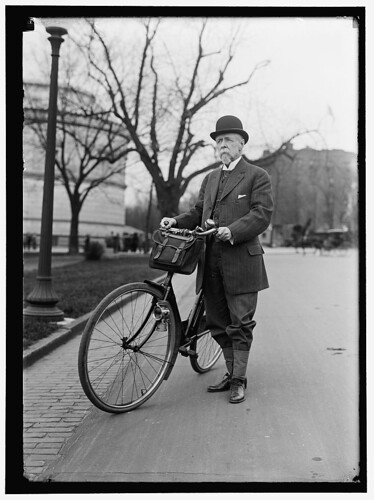
The original photograph in the Library of Congress collections
The above image of the Department of State official, who happened to be someone who rode to and from work every day on a bicycle.

The photograph used in 1914 about Adee's trip to France, published in The Greenville Journal newspaper in July 1914
These kinds of short articles were distributed nationally by different services and often were used to fill up pages with human interest material. In the above version Harris & Ewing (the photography house) was given credit.

And the Grand Forks Daily Herald . . .
A rather more cropped version of the photograph and a shorter version of the text, above. They needed to fill up some of the page, but not so much.

And the Dakota Farmers Leader
This paper made use of the item as supplied, it would seem, like the first version. The darkness of the photograph in this last example has to do with the quality of the microfilm and (probably) not any real differences in how the photographs would have looked on newsprint.
One sees this sort of thing from time to time in Chronicling America, the searchable database of American newspapers from many states provided by the Library of Congress. Occasionally even involving bicycles!
Interesting post...Thanks for sharing....
ReplyDeleteFor the recycling of text and images across newspapers in distant locations the term "boilerplate" may prove helpful. Agencies would send out such material to subscribing publishers. For images the material was papier-mache, I believe, which would be filled with hot metal to create a printing surface. Papier-mache was also used for stereo-typing (reprinting).
ReplyDeleteFor the recycling of text and images across newspapers in distant locations the term "boilerplate" may prove helpful. Agencies would send out such material to subscribing publishers. For images the material was papier-mache, I believe, which would be filled with hot metal to create a printing surface. Papier-mache was also used for stereo-typing (reprinting).
ReplyDelete